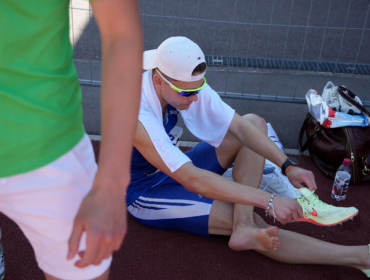Since weeks I wanted to write a scientific outline about this subject. My searches have been frustrating, the papers I finally retrieved are not very concise reflecting a situation of not-knowing a lot.
The studies available look at the various parameters we usually measure, if we design a study in sports and experience science. I just want to list some of them here: maximal oxygen uptake, resting and maximal heart rate, blood pressure, cardiac output and other cardiac functions, erythropoiesis, hemolysis, energy expenditure and balance, blood ammonia, muscle glykogen, creatine kinase, cortisol, testosterone, catecholamines, different ratios, cytokines, growth factors, immune parameters, sleep patterns, mood scores and many more. Each study picks another focus, but the whole picture is missing.
Thus, the measurements paint as already mentioned in the title a blurred picture. The many study results are not conclusive and not significant.
Do different sports need distinct tapering strategies?
We don’t know yet. A lot of science work has still to be done to give the various taper strategies a scientific background.
Scientific studies need to outline a proper hypothesis, and consider the complexity of the physiology behind. Until today we don’t even know whether the taper has to change depending on the sports. Maybe we have to discriminate between strength and power sports, endurance and ultra-endurance sports, maybe we have to look at the individual.
That our knowledge about tapering is still very limited, has in my opinion got mainly two reasons. One is, science studying this field is still very young. The first scientific study was reported as recently as 1992 (Shepley at al.). Secondly, the studies that have been performed are only vaguely aware of the complexity of the physiology behind the body’s regulatory and adaptation processes in the tapering and the preceding training. Therefore future investigations of a more dynamic nature are needed, investigations, that take the course of time of physiological changes into considerations.
Interesting to know is that round about 50 years ago we have not even been aware of the fact, that a special recovery regimen before a competition can improve performance. Training was continued right through to the competition. So it happened that guys were running a marathon before racing the marathon. One of the first authors to discuss the importance of resting before competition was Stampfl in 1955. He insisted that his distance athletes rested for full four days before competition. The term tapering was first coined by Carilie and Frank Cotton in 1947.
There are various tapering strategies around that differ in duration and intensity. Banister et al. published a paper in 1999 looking at three different tapering strategies. I think this paper is still the foundation of what is roughly done until today with lots of minimal variations and individualizations by coaches and athletes. The study by Banister found that the more rapidly you reduce training in the taper, the better is your racing performance. Thus the most effective taper was one in which training was reduced by 50% on the third day of the taper and 75% on the sixth day with a continuing reduction for the next eight days.
Is tapering a period of time for the body and the brain to adapt and recuperate?
The answer is maybe. How to measure, how to assess your very own and optimal way of tapering to achieve what seems to be clear cut: Tapering produces a dramatic improvement of performance, if you do it accordingly.
You may not be able to go for all the different and then anyway inconclusive parameters such as metabolic changes, muscle glycogen concentration, VO2max and lactate (levels that seem not be influenced by the tapering anyway). But you have access to your own mood state, sleep pattern and perception of exertion. All three are complex physiological and psychological phemomena that indicate your condition and well-being as a whole. It is the body and the brain, both together fresh and ready to rock that make up for a peak performance. All three are emergent states that indicate the condition of your immune system, your ability to cope with stress factors and adapt to changes etc. If during the taper your mood (e. g. perceived fatigue, depression, anger, confusion) is not getting better, your sleep not more restorative and your level of vigour not higher, then there was probably something wrong with the preceding training. At least these are the conclusions I draw from the incoherent literature I read.
Is tapering a phase for focusing on neuromuscular recruitment?
Let’s dare to say yes to this point, one of the few with almost unanimous consensus among the scientific community. Taper results in an increased strength and power output in athletes obviously regardless to the sports they do. As I would put it, during the taper you have to rest, but the current of signals from the brain to the periphery and back should not stop. This is at least what field experience of athletes proves. Signals have to be sent with sufficient intensity and frequency to keep open all the paths from the brain to the periphery of the muscles and other organs and back, to have all the necessary neurones on stand-by mode and ready to fire when receiving the command of the race’s starting signal.
Summary
Scientific evidence confirms that tapering produces a dramatic improvement of performance. The effect is greatest if there is a rapid reduction in training volume already in the first few days of the taper and if training during the taper is at high intensity, approximating 5-km race pace for runners.
To sharpen the training to optimize the training effects on the brain, and its ability to recruit a larger muscle mass for longer during subsequent exercise, and at the same time to leave enough time for adaptation and recuperation that’s what I think counts during tapering.
The key could be to do very little training during taper, but to train only at race pace. Tim Noakes’ expresses it like this: »Once you decide to taper, do as little training as your mind will allow, but do this little training at fast pace.«




